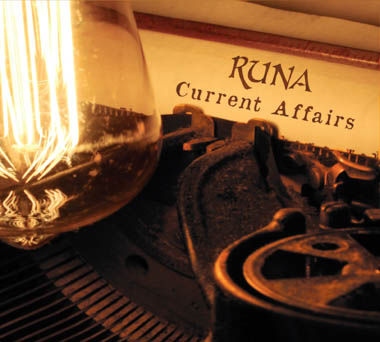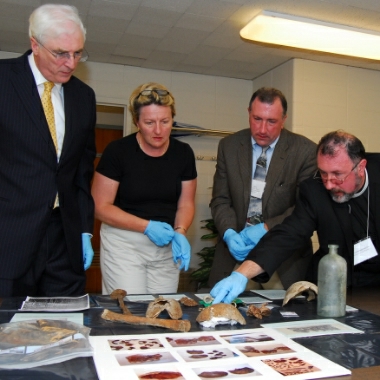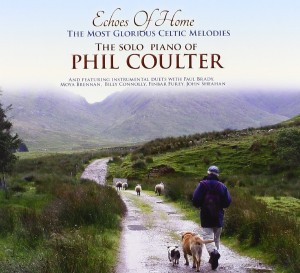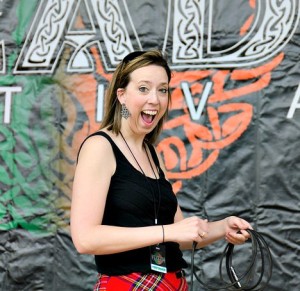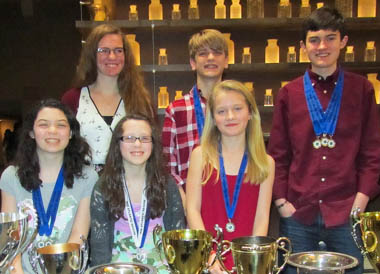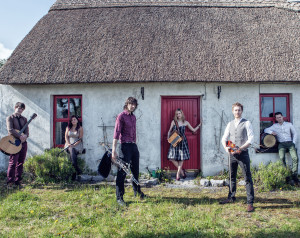When someone Irish-born describes something as “class,” they mean it’s brilliant, well done, magnificent and all of the other Thesauraus synonyms for “great.” I explain this so you know what I mean when I say that “Current Affairs,” the latest release from the Philadelphia-based Celtic band, RUNA, is class.
It’s the cap of an amazing year for this group, made up of vocalist Shannon Lambert-Ryan, her husband, Dublin-born guitarist Fionan de Barra, Canadian percussionist Cheryl Prashker, Galway native and multi-instrumentalist Dave Curley, and Kentucky-born fiddler, Maggie Estes White. In 2014, RUNA won top group and top traditional group in the Irish Music Awards and an Independent Music Award for Best Song in the World Traditional Category for “Amhrán Mhuighinse” from their last CD, “Somewhere Along the Road.”
They’re also booked at Celtic festivals from coast to coast and Canada, though with this CD, they could certainly diversify. Never afraid to color outside Celtic lines, RUNA could book folk and bluegrass festivals—maybe even the occasional jazz gathering–thanks to their artful blending of these seemingly contrasting musical influences on “Current Affairs.”
For an eclectic music lover like me, this is heaven. “Current Affairs” is like a warm, delicious stone soup, made with a little luscious bit of this and that from the group’s musical DNA. De Barra comes from a musical family and honed his skills busking in Dublin, later making his professional debut in “Riverdance,” the show that ushered in a renewed interest in Irish folk music. Lambert-Ryan learned to step dance at Philadelphia’s Irish Center, but is as at home with folk, classical, and musical theater as she is with Celtic music. Cheryl Prashker studied classical percussion at McGill University but she’s equally adept at everything from rock and roll to klezmer and jazz. Dave Curley is a traditionalist who also plays with the trad band, Slide Ireland. And RUNA’s latest killer fiddler—they appear to have a direct line to “killer fiddler” central—is Maggie Estes White, who brings her Kentucky bluegrass roots to the mix, which serves as a reminder that those roots also reach back to Celtic lands.
Also on “Current Affairs,” three Grammy award-winning guest artists: accordion player Jeff Taylor (Paul Simon, Elvis Costello) who has been a friend for years; Ron Block (Alison Krauss & Union Station), a multi-instrumentalist who plays alternative country, bluegrass, and writes gospel music; and Buddy Greene (Kentucky Thunder), who plays guitar, harmonica and, like Block, has his roots in gospel.
But you’ll also hear the spirit of Pete Seeger who died the night that RUNA recorded one of the songs he often sang, “The Banks Are Made of Marble,” by New York State apple farmer Les Rice who wrote the tune and lyrics in 1948, though it could serve as the theme song for the Occupy movement. There’s also a song, “Black River,” from Amos Lee, another Philadelphia musician, that has a touch of Negro spiritual about it, and one from English folk singer Kate Rusby, known as “the first lady of folkies” in the British Isles. Her lilting, lyrical song, “Who Will Sing Me Lullabies” seems to have been custom written for Lambert-Ryan’s classic folk soprano voice.
Lambert-Ryan and de Barra contribute an original song to the mix, “The Ruthless Wife,” loosely based on the story of Lambert-Ryan’s great-great grandfather, a Philadelphia cop who was killed in the line of duty just outside his beat near the Northern Liberties neighborhood. “We’ve taken liberties and poetic license with the story because there are too many details and it would go on forever,” said Lambert-Ryan when I spoke to her this week.
The basic story: Her great-great grandfather, James Allen Lambert, who was known as a ladies’ man, was separated from his wife and living with a young woman half his age named Rosie Gallagher. When Rosie found out he’d been killed, she was so distraught that she took poison, then thought better of it, and hired a cab to take her to Hahnemann Hospital where her lover’s body was taken. It was, alas, too late—for the both of them.
“When the city went to give me great-great grandmother his pension, she told them, ‘I don’t want that man’s pension,’” said Lambert-Ryan. “It’s a crazy story and we laughed about it for years. When Fionan and I decided to write a song for the CD, we were trying to come up with something and we looked at each other and said, ‘This is a really good story. We don’t have to look any further.’”
One of the things I’ve always loved about RUNA is their fearless reinterpretation of traditional tunes, like “The Hunter Set” on “Current Affairs,” which bursts with the step-lively influence of both Celtic and bluegrass, and “Henry Lee,” a traditional song in Ireland, Scotland, and Appalachia, which they’ve imbued with jazz and rock undertones.
It’s a fresh, exciting collection that sounds like nothing else you hear in the world of Celtic music. They’re real originals. They’re a a class act and this is a class CD.
RUNA will be debuting “Current Affairs” on Friday, June 20, at the Sellersville Theatre, 24 W Temple Ave, Sellersville. Tickets are available online.

